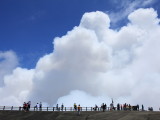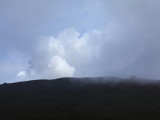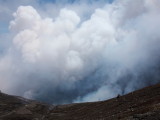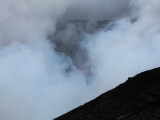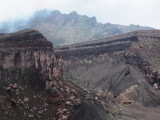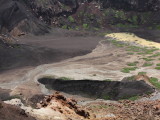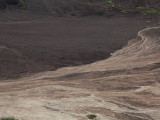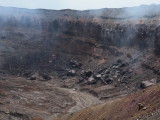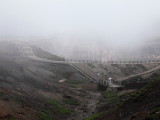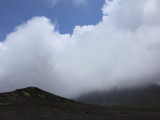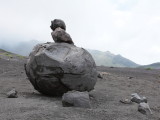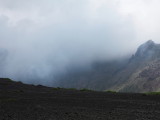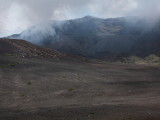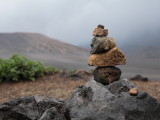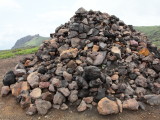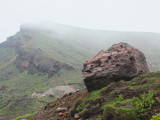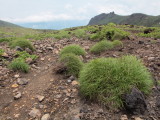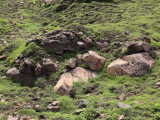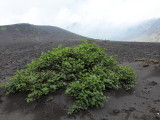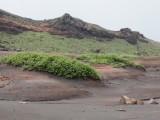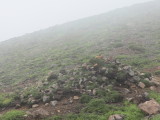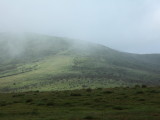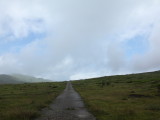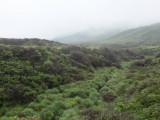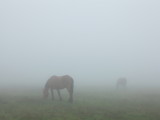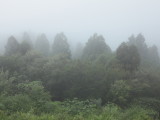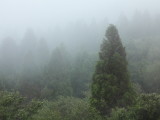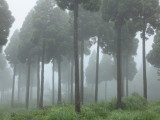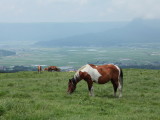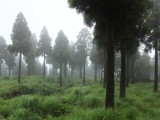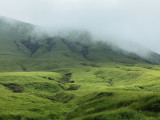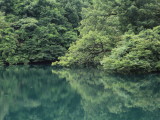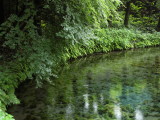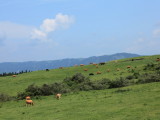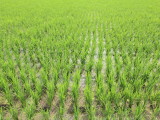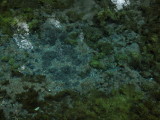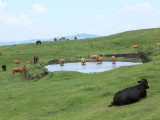九州の中心にある阿蘇山は世界有数のカルデラを有する火山で、
「火の国」熊本県のシンボルです。
カルデラの中央には、阿蘇五岳(高岳、中岳、根子岳、烏帽子岳、杵島岳)が聳え、
中岳の火口は時々噴火し、煙を上げ続ける活火山です。
吸い込まれそうな迫力の中岳の噴火口の前に立つと、
地球が一つの生命体である、ということを実感します。
阿蘇の景観は、主に中岳の噴火口付近や根子岳の断崖、
砂千里が浜などの岩石の風景、草千里に代表される草原の風景、
広葉樹林、スギ植林の樹林から成っています。
噴火口から砂千里が浜では、火山灰、火山性ガスの影響で、
植物の生育に適さない極限の環境で、
イタドリとコイワカンスゲなどの限られた植物しか生えていません。
そこから少し離れると、ミヤマキリシマなどの灌木がみられるようになり、
次第に、植物の多様性が増して行きます。
草千里まで離れると優しい草原となり、
牛馬が放牧されています。
草原の風景は、自然のままで成立するのではありません。
毎年春に野焼きを行なうことで、樹林になるのを防いでいます。
スギ植林も、見事なまでに手入れが行き届いています。
阿蘇山の雄大で優しくて、全てを包み込んでくれるような風景は、
自然の元々の姿ではなく、自然と人間が共生して、
手を加えていくことで維持されているのです。
日本人は、古来より自然と共存し、
山、海、樹木、岩石などを神々として、畏敬し、崇拝してきました。
阿蘇山も、古くから火山信仰の対象となってきました。
6世紀の中国の歴史書「随書倭国伝」には、
「阿蘇山有り、故なくして火起こり石は天に接するほど、
人々はおそれおののき祈りをささげ祭り事を行った
(原文:有阿蘇山其石無故火起接天者俗以為異因行祷祭)」
と記されています。
カルデラの盆地では、清涼な水が湧き、人びとは農業を営んできました。
火山の噴火による火山灰の堆積によって、農業に被害が出る事もあります。
農作物が無事に育つように、人々は火山に向かって祈りを捧げていたそうです。
豊かな実りをもたらし、時々大きな災いもおこす自然を、
私たち日本人は縄文時代から、調和をはかりながら、
自然の実りも脅威もまるごと受け入れてきました。
阿蘇山は、日本人の自然と共生する生き方がつくりだす、
日本が世界に誇る場所です。
In the center of Kyusyu island, Japan, is Mt. Aso, a volcano,
which has the world’s most pre-eminent caldera.
It symbolizes the ‘Land of Fire’, Kumamoto Prefecture, Japan.
In the center of caldera, there are five peaks
: Mt. Taka, Mt. Naka, Mt. Neko, Mt. Eboshi, and Mt. Kishima.
The crater of Mt. Naka contains an active volcano
which continuously emits smoke and has occasional eruptions.
When standing in front of the crater,
you can seem to understand truly that the earth is a living organism.
The landscape of Mt. Aso consists of rocks,
mainly around the crater of Mt. Naka and the cliff of Mt. Neko,
and Suna senri ga hama, grass, as represented by Kusa senri.
As well, scenes of the broad leaf and cedar forest.
The extreme area from the crater to Suna senri ga hama,
due to the volcanic ash and gases, is unsuitable for vegetation.
Actually, only plants such as Japanese knotweed and chrysolepis can grow here.
A little way from that area grows shrubs like Miyama kirishima.
From there, the variety of plant life gradually increases.
When you come far as Kusa senri,
there is tender grass field with cows and horses out to graze.
Scenery of grass doesn’t come into existence naturally.
People must burn off the fields every spring to prevent the area becoming a forest.
Cedar planting is prosperous.
Magnificent and tender, the landscape of Mt. Aso seems to encompass everything,
but it wasn’t originally this way.
It has been maintained as people care and live in coexistence with nature.
Since ancient times, Japanese people have lived in coexistence with nature,
and have worshiped mountains, seas, forests, and rocks as gods.
Mt. Aso has been a subject of volcano worship.
In a sixth century Chinese history book, the Book of Sui,
the Record of Wakoku, it is said that at “Mt. Aso, fire burns without reason.
Rock reaches as high as heaven.
People were in awe of the situation and offered prayers to perform rites.”
The basin of caldera pours clean water, and people have worked the earth.
Sometimes, accumulated volcanic ash from eruptions causes harm to agriculture.
People have prayed to the volcano for good harvest.
Nature brings abundant blessings as much as great disaster.
Japanese people have sustained harmony with nature since the Jomon Period,
from as early as 14,500 BC to around 300 BC,
and have accepted both natural blessings and threats.
Mt. Aso is a place kept by a natural way of living of Japanese people,
who pride themselves on living in coexistence with nature.
